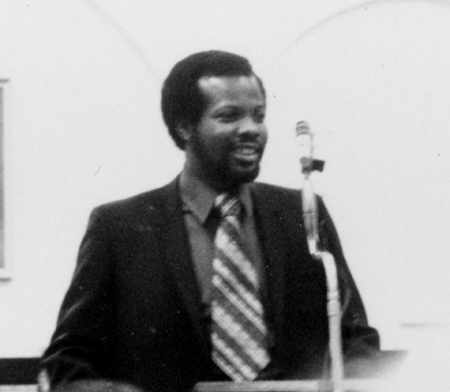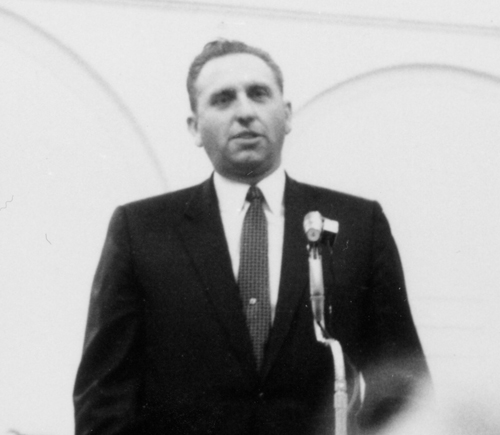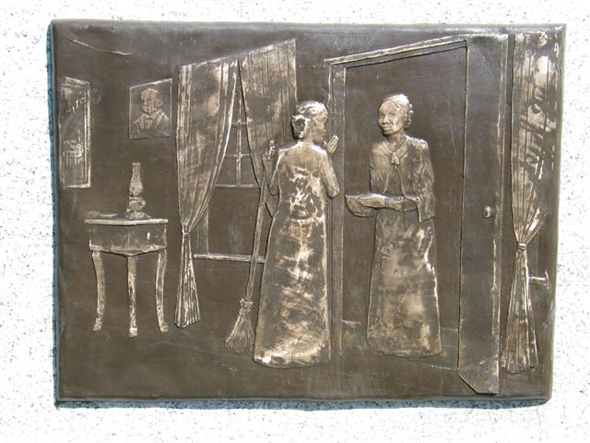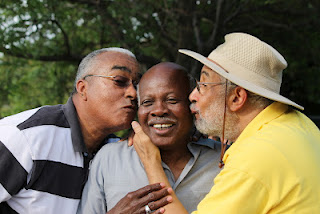Ruffin Bridgeforth, an African American Latter-day Saint born in Louisiana in 1924-at the height of Ku Klux Klan activity-had already had hard conversations with his son. On one Sunday afternoon, his son approached him. “Dad,” he said, “those kids back in the alley are smoking and doing everything and they’re passing the sacrament. I don’t do any of those things, so how come I can’t pass it?”
Ruffin answered, “I don’t know why we can’t hold priesthood. There’s a lot of speculation. But I do know the Lord loves you, and I want you to know that too. We’re climbing a hill right now, and it’s a steep one. But we can’t stop climbing. We can’t stop halfway. All these things will be for our good. All these things will give us experience. Just wait. God knows it all.”
His son then announced that someone had said that “the Negro” was cursed.
“Who told you that?” Ruffin asked.
“Everyone.”
“Anyone who does a thing like that isn’t a good member of the Church. Don’t you know? The Lord loves you as well as he does anybody. Don’t you feel that love?”
“Not from them.”
“Son, those people who lack love, they’re the losers because they’re not keeping the commandments of our Heavenly Father-and they’re not receiving the blessings. The Lord will weigh their hearts, so you don’t have to worry about it. Don’t you feel love from the Lord?”
“Sometimes.”
“Have faith, and the Lord will make everything right.”[i]
Darius Gray, who was a reporter for Salt Lake City news station KSL, was known and loved by the Brethren, as was Ruffin Bridgeforth. Gray had participated in the broadcast of President David O. McKay’s 1970 funeral, concluding spontaneously with the words, “Out of the ages he came, and into the ages he goes: David Oman McKay, ninth prophet and president of The Church of Jesus Christ of Latter-day Saints.”
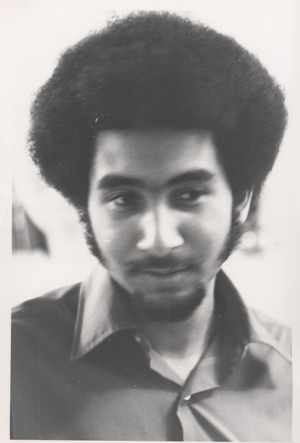
President McKay was succeeded by President Joseph Fielding Smith. Of course, nothing had changed for Black Latter-day Saints, and the issues were pressing.
In 1971, Ruffin Bridgeforth, Darius Gray, and Eugene Orr met in a small room in the Marriott Library at the University of Utah, and knelt in prayer. As Gray puts it, “Back then, having three black Mormons together was like having a quorum. There weren’t many of us.” In fact, in that year, there were only three or four hundred Latter-day Saints of African descent throughout the world. There are now around 700,000.
Bridgeforth, Gray, and Orr counseled together on the issues they were facing: How could church members of African descent hold on to their children, and particularly to their sons, with the priesthood restriction in place?
Finally, Gray approached President Smith with their concerns. President Smith assigned three junior apostles, Elders Hinckley, Monson, and Packer, to meet with the three black men. Their meetings began on the morning of June 8, 1971-a date which would take on greater significance in 1978, when the priesthood revelation (actually received on June first) was made public.
Leitha Orr, wife of Eugene Orr, wrote this in her journal:
These six men [the three Apostles and the three black men] met nearly every two weeks for four months discussing, planning, and learning to respect and love each other. As my husband said, I have cried on Elder Hinckley’s shoulders, and he has cried on mine. Elder Packer has cried on my shoulder and I on his. Elder Monson and I have cried together. We have truly learned to love and respect each other.” It also includes a simple prophecy: Soon our men will have the priesthood and then we can progress spiritually and be able to go to the temple. I pray we will all endure until the end.
In an unscheduled meeting, Elder Gordon B. Hinckley said to all present: “My friends, after all our meetings, I hope we can call each other friends. I need to tell you that we have taken your questions to the other members of the Twelve. The Brethren have entered into prayer. As a result, we feel led to establish a support organization for the Negroes of this Church. We have called Brother Bridgeforth to be its president. He’s asked that you, Brother Gray, serve as his first counselor, and you, Brother Orr, as his second. Ruffin has already accepted the calling.”[ii]


Both Gene Orr and Darius Gray accepted callings as well. On October 19th, the Genesis Branch of the Church of Jesus Christ of Latter-day Saints was organized. Mary Lucile Bankhead, a descendant of vanguard pioneer and “colored servant” Green Flake, was the Relief Society president. Elder Monson made these comments at the organization of the group:
I stand before you tonight in a chapel that is just five blocks from where I was born and where I spent the first thirty years of my life, and I feel it a privilege to participate in this historic occasion. We are meeting in the Third Ward, one of the original pioneer wards. Among those early pioneers were members of the race now constituted as the Genesis Group. It’s been a long trek, but the promised land is here. I testify to you that our Father is pleased with what has transpired. Your theme could be that of an old Sunday school hymn: Do not weary on the way.’ And your counsel, Be not weary in well doing, for you are laying the foundation of a great work. Out of that which is small proceedeth that which is great. I once heard a definition of a pioneer as one who goes before, showing others the way to follow. As I have met with Brothers Bridgeforth, Gray, and Orr, I have been in the presence of true pioneers, who in their attitudes, in their testimonies of the truth, in their willingness to serve, in their demonstrated love of the gospel, are going before, showing others the way to follow. I salute these three pioneers tonight. And each of you is a pioneer in the Genesis Group. This is a great beginning.[iii]
The Genesis group conducted unifying activities.
They performed plays, put on soul-food dinners, and activated many of their fellow Mormons of color. In the summers, they had great picnics, which brought many of Utah’s black population out for socializing and food, whether or not they were LDS. Elder Spencer W. Kimball, not yet the Church president, attended one of these picnics and was returning to his car with his wife when he said, “Wait. I forgot to kiss the children.” He turned back and gave each child a kiss. Later, during the Christmas holidays, he personally brought Christmas baskets to the homes of each member of the Genesis presidency.
Though there were great successes, the fledgling group had to work hard to keep its members active. It was an uphill battle-particularly with the young men.[iv] Within three years of the group’s establishment, Gene Orr had moved to Canada, and Darius Gray had become temporarily inactive.[v] Other counselors were called, but with the priesthood revelation in 1978, the group found fewer and fewer members attending. Soon, the meetings ceased.
In 1996, it became clear that Genesis was still needed. Though the priesthood had been extended to “all worthy males,” the ubiquitous speculations about the curses of Cain/Ham/Canaan or about Blacks’ neutrality or misbehavior in the pre-mortal world continued to circulate. Many converts of African descent felt isolated in their predominantly white wards, with a worship style much different than what they had known previously, and with periodic lapses in other congregants’ courtesy, or in ignorant repetitions of the divisive folklore. Leaders soon recognized a revolving door-black converts entering and then leaving the church. Clearly, the extra support was still needed. Ruffin Bridgeforth asked President Hinckley if the Genesis Group might be re-established. He was told that as president of Genesis, he still had all the authority he was given in 1971. He was still the president, and was now also a high priest. The organization had never been disbanded. Though Bridgeforth was ill, his feet gangrenous, he took the helm again. Darius Gray returned as his counselor, and Don Harwell served as second counselor.
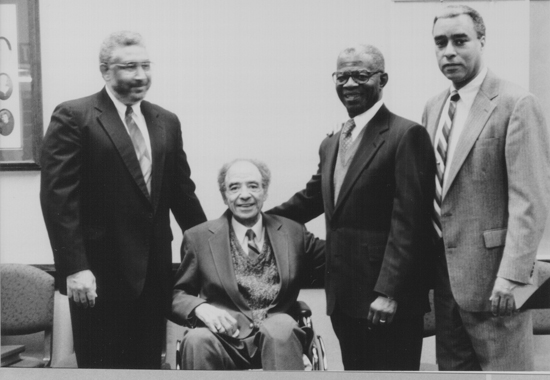

In 1997, Bridgeforth passed away, and Darius Gray was asked to fill the presidency. Genesis comprised a small group, and met in the Relief Society room, filling only a few rows of chairs. The meetings were supplemental to other church meetings, and Genesis leaders usually held callings in their home wards.
The group staged a play about Jane Manning James, titled I Am Jane in 2000. This was a first-a full play about a black Mormon pioneer. Local newspapers publicized it well. As a result, the meeting was completely full. It was not in the Relief Society room this time, but in the chapel and overflow. More people came than could be accommodated.
In that same year, the Genesis Group dedicated a monument to Jane James at the Salt Lake Cemetery-an event which, again, was well-publicized and drew attention to what some had referred to as “the best kept secret in the Church”: Genesis.
Genesis meetings had now become too large for the Relief Society room, and were moved to the chapel, usually requiring the overflow area as well. Speakers over the years included Sister Sheri Dew, Elder Alexander Morrison, Elder Jeffrey R. Holland, Sister Cheiko Okazaki, Elder Marion D. Hanks, and many others from various walks of life. Meetings always include the singing of a traditional spiritual, the speaker’s presentation, and then testimony time.
In June 2003, the Genesis Group meeting was held in the Salt Lake Tabernacle, celebrating the twenty-fifth anniversary of the priesthood revelation. Gladys Knight and the Saints Unified Voices Choir performed, with Elder Merrill Bateman presiding and Darius Gray conducting. Sister Knight cited 4 Nephi 17 in her talk: “There were no robbers, nor murderers, neither were there Lamanites, nor any manner of -ites; but they were one, thee children of Christ, and heirs to the kingdom of God.”
The audience exceeded the tabernacle’s capacity.
President Gray was released that same year, and Don Harwell became the new president, with counselors Orrin Howell and Eddie Gist.
Not only does the Genesis Group continue to thrive in Utah (held the first Sunday of every month at 6710 S. 1300 E., SLC), but other official Genesis groups have been established throughout the United States.
We’ve come a long ways since 1971 when three black men prayed for direction and support under hugely difficult circumstances. Elder Sitati from Kenya now serves as a member of the First Quorum of the Seventy.
Fred Antioni Parker is an area authority in the Southern states. President Parker was formerly a stake president in Georgia, and has been replaced by former bishop (also African American) Jermaine Sullivan. Ahmad Corbet serves as a stake president in New Jersey. Additionally, various area authorities serve in their home countries in Africa and in other predominantly black nations. There are temples in Nigeria and Ghana, and another under construction in Kinshasa, Democratic Republic of Congo.
President Hinckley spoke fondly about the Genesis Group when Ruffin Bridgeforth passed away: “I am inclined at times to look upon all that has happened to the black members of the Church and for the lengthening shadow of that first small and humble beginning that took place, as I remember, in the old Third Ward building on 7th South and State Street.”
Margaret Blair Young has worked with Darius Gray for fourteen years on various projects, scholarly and/or creative, to shed light on African American LDS history. Their trilogy, Standing on the Promises (updated and revised), will be available in the fall. Their documentary, Nobody Knows: The Untold Story of Black Mormons, is now available wherever LDS books are sold.
[i] The account of Ruffin Bridgeforth talking to one of his sons about the priesthood restriction is from his oral history, recorded by Alan Cherry on March 16, 1985, for the Charles Reed Center for Western Studies. In the transcription, the account appears on pages 17-18. I have added some words Ruffin says in KBYU’s All Worthy Males about those who lack love being “the losers.
”
[iv] Details of these issues are included in the special features of the DVD Nobody Knows: The Untold Story of Black Mormons. The documentary itself tells the story of Genesis through interviews with Gray and Orr.
[v] The difficulties of getting Genesis off the ground are revealed in the minutes of the various meetings. Minutes of the YWMIA May 9, 1972, record two present.Minutes of May 28, 1972, report Mary Allen saying, “Contention in the group will not allow us to survive. Selfishness, distrust are our problems. We must be united and examine our motives in being a part of the group.











